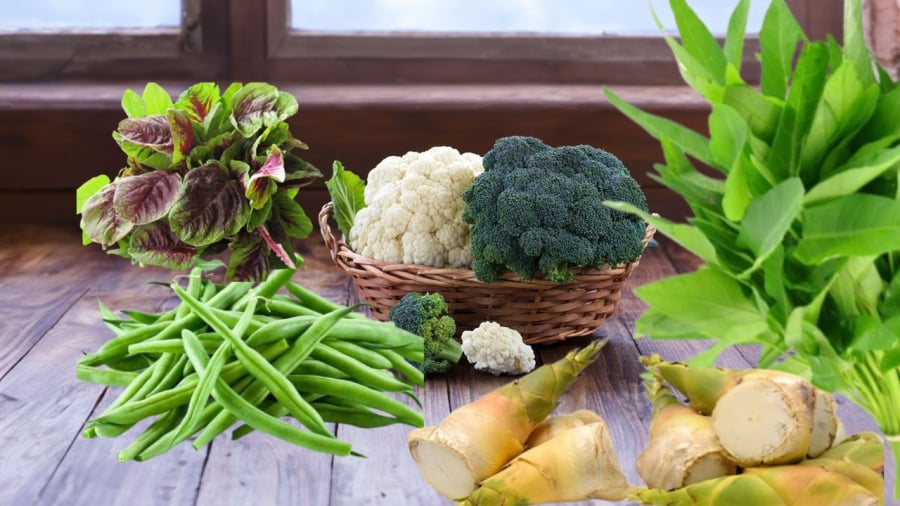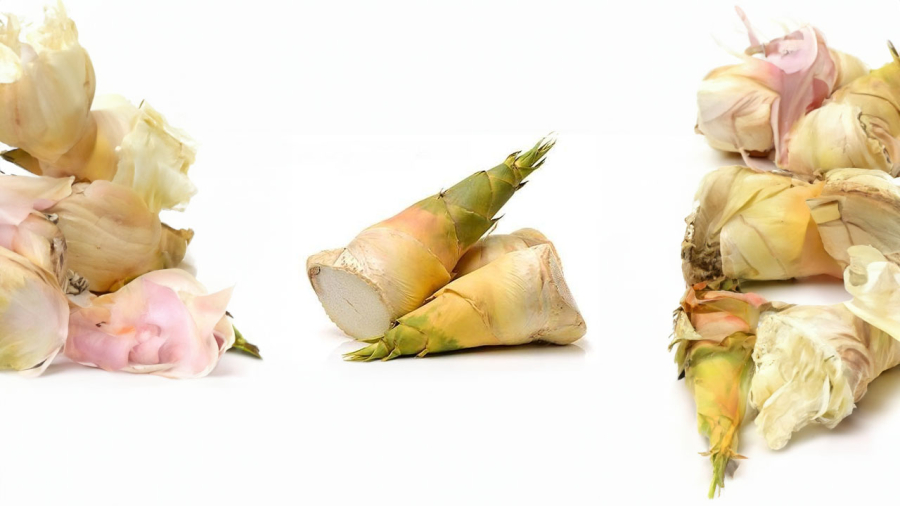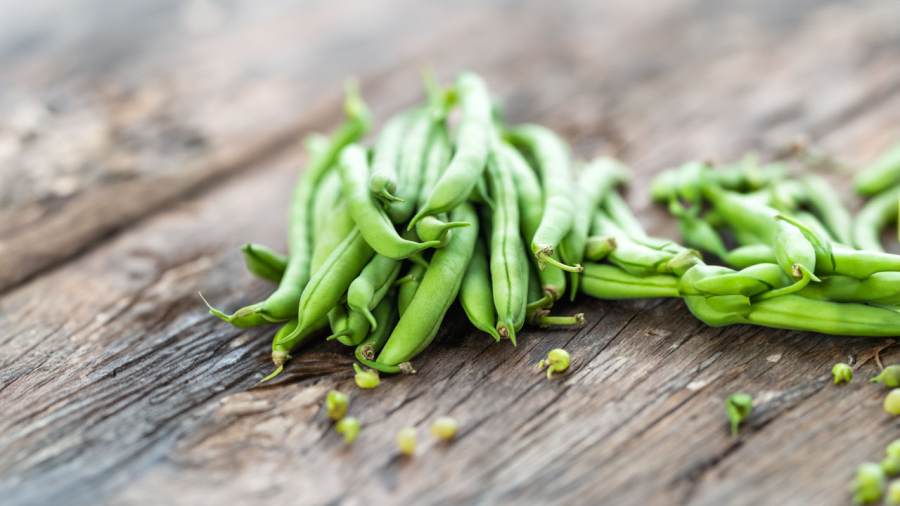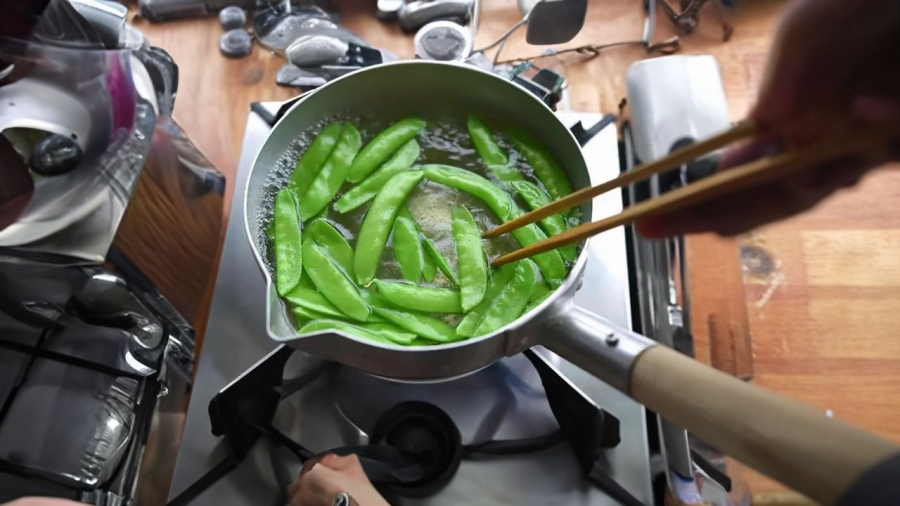4 Vegetable Groups to Remember Before Cooking: They Not Only Enhance the Color but Also Boost Nutrition and Detoxify
There are many benefits to blanching food before cooking, but many people overlook it. Blanching can enhance the flavor of the food, increase its nutritional value, and make it safer to prepare. Blanching can remove certain undesirable substances, including toxic compounds and unpleasant flavors.
Some natural substances in food can be harmful to health, such as oxalic acid, phytohaemagglutinin, nitrite, saponin, and cyanogenic glycoside. Among them, oxalic acid is a relatively strong organic acid that can combine with other substances, such as calcium and iron in the body, affecting the absorption and causing kidney stones.

Phytohaemagglutinin is also a substance found in plants, especially in certain types of beans. Consuming too much phytohemagglutinin can cause poisoning, nausea, and diarrhea.
Nitrite is also often found in many vegetables and tubers. If consumed in large quantities, it can react with protein degradation products under acidic conditions and produce nitrosamines, which are recognized as carcinogenic substances.
Blanching in boiling water can help reduce these substances in food. Therefore, the following 4 groups of vegetables are very useful if you blanch them before cooking:

Vegetables high in oxalic acid: Fresh bamboo shoots, spinach, amaranth, bitter gourd, water mimosa, kangkong
Oxalic acid in vegetables can cause a bitter taste when consumed. In particular, oxalic acid can combine with calcium to form calcium oxalate, which is poorly absorbed and inhibits the absorption of calcium in the body, leading to symptoms such as weak legs, muscle twitches, and fatigue. Regular consumption of large amounts of vegetables high in oxalic acid can increase the risk of dangerous kidney stones. Therefore, you should blanch these vegetables in boiling water as oxalic acid dissolves easily in boiling water, helping to remove this toxin and improve the taste of the dishes.
Vegetables containing saponin: mung beans, lentils, long beans, potatoes, cucumber…
Some vegetables contain a lot of phytohemagglutinin and saponin. They can cause dangerous poisoning, ranging from vomiting to severe diarrhea. In particular, both ends of beans and vegetables like mung beans, lentils, and long beans, as well as the peel at both ends of the fruit, contain harmful substances for the human body, such as phytohemagglutinin and saponin. If not cooked thoroughly, they can cause food poisoning.
These substances can be removed by blanching in water, so you should blanch them before cooking.

Vegetables prone to pesticide residue and difficult to clean: Chinese cabbage, white cabbage…
Chinese cabbage or lettuce is a nutritious vegetable, rich in nutrients such as vitamin C, calcium, iron, phosphorus, etc. They have many health benefits, but due to their leafy structure, they are prone to pesticide residue. Moreover, both green and white cabbages are prone to small worms. Therefore, blanching can help remove eggs and small worms, as well as eliminate plant protection chemicals in boiling water, making them safer to consume.
Aquatic plants prone to parasites: Lotus bulbs, water chestnuts, bean sprouts, watercress, water spinach…
Aquatic plants such as water chestnuts, lotus bulbs, watercress, and water spinach often grow in swamps, ponds, or rice fields, where the environment is conducive to the growth of bacteria or high parasite infection. If you do not know how to handle them properly, you may be infected with parasitic worms, which can cause dangerous digestive diseases. Therefore, it is necessary to blanch them in boiling water before cooking.
Bean sprouts are a moist vegetable, and during the germination process, they can generate bacteria. Therefore, to eliminate bacteria, it is advisable to blanch them in hot water. Some dangerous bacteria such as Listeria, Salmonella, and E. coli can cause severe food poisoning. But don’t worry, these bacteria are heat-sensitive and can be destroyed by blanching in hot water.

The correct blanching method for vegetables
Different types of vegetables require different blanching methods. Blanching in cold water (pre-boiling) is suitable for bitter-tasting tuberous vegetables such as bamboo shoots, turnips, etc. Boil the water first, then put the vegetables in and remove them to prepare your favorite dish. This blanching method is particularly necessary for fresh bamboo shoots because they contain many toxins.
For some easily cooked vegetables, it is best to boil the water, put in the vegetables, and then remove them to preserve their color and crispness.
When blanching leafy vegetables, some vitamins and minerals, such as vitamin C, vitamin B1, vitamin B2, calcium, phosphorus, potassium, etc., can be lost to some extent. According to information, after blanching tuberous vegetables, such as the Solanaceae family, the retention rate of calcium, phosphorus, and potassium ranges from 60% to 80%; leafy vegetables can cause a loss of about 50% of vitamin B1 and B2.
When blanching, you should use a large pot of boiling water to blanch quickly and minimize the loss of nutrients in the vegetables. The blanching time for leafy vegetables should be about 20 seconds.
When blanching, it is important to use enough water. Avoid using too little water, as the vegetables may become dull and not clean enough, or blanching takes too long and causes nutrient loss.
When blanching, do not cut the ingredients into small pieces. Instead, blanch the whole vegetable or cut it into large pieces.
You should add a little salt and a spoonful of oil/fat to the blanching water to better preserve the vitamins.
After blanching, the vegetables should be cooked immediately to avoid the risk of bacterial contamination.
The post https://meo.tips/food-receipt/4-vegetable-groups-to-remember-before-cooking-they-not-only-enhance-the-color-but-also-boost-nutrition-and-detoxify/ appeared first on Meo.tips.
View more from Meo.tips:
Discover How to Safely and Efficiently Deodorize Kitchen UtensilsOvercoming Baking Failures: Strategies for Success
“How to Keep Your Cutlery as Sharp as New with Sharpening Stones and Rods”
8 Essential Fish Processing Tips You Need to Know
Six All-Natural Solutions for Getting Rid of Cockroaches at Home
How to Make White Clothes Look Like New Again Using 20 Stain-Removal Techniques
What You Need to Pack to Ensure a Perfect Trip to Sapa
Exploring the Beauty of Kien Giang’s Wild Blue Sea – Getting Lost In Its Splendor
Experience an “Excellent” View and Price at Top Homestay Binh Ba – Live a Virtual Life!
How to Properly Use and Maintain a Blender
Discover the Must-See Tourist Attractions in Ben Tre
Thousands of Liked Photos Sparkled by ‘Excellent’ Scenery of Top Homestay in Phan Rang
“Exploring the Scenic Beauty of Dong Nai For a Rejuvenating Weekend Getaway”
When Should You Replace Your Toothbrush?
Generate Easy-to-Use Short Links With These 12 Websites
How to Block Friends from Seeing You On Facebook Chat
Understanding Cookies: Uses, Management and Deletion in Chrome
9 Tips for Easily Flattening Clothes Without Ironing
Creating Beautiful, Unique and Meaningful 8/3 Greeting Card Templates
How to Whiten Yellow Flexible Phone Cases: 6 Not-So-Well-Known Tips
Nhận xét
Đăng nhận xét